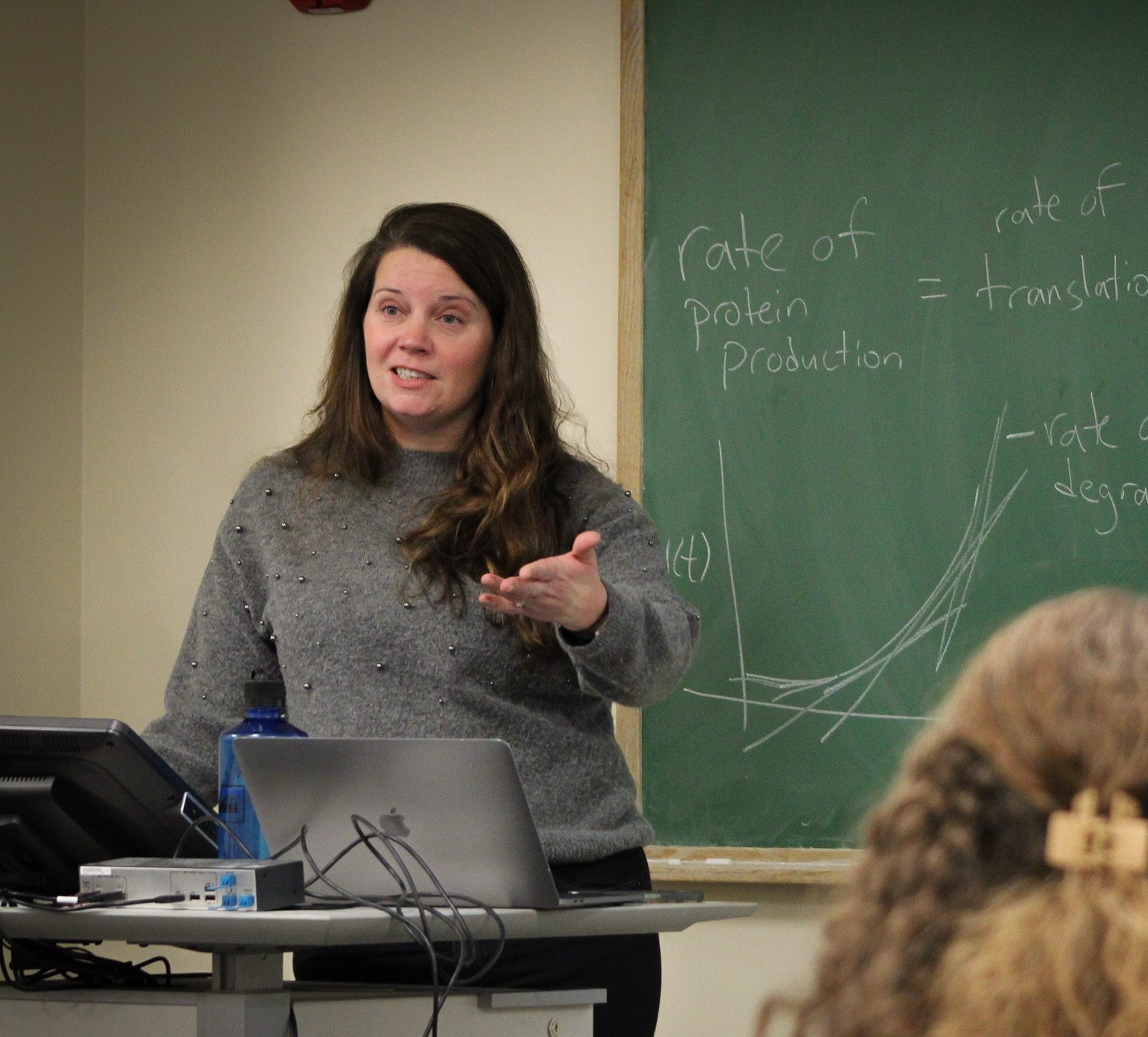Supporting Students with Learning Disabilities

Supporting Students with Learning Disabilities
Nancy Nelson discusses research to develop and test interventions for at-risk students
Assistant professor of special education Nancy Nelson studies the implementation of school systems and academic interventions to support students with learning disabilities. A former special education teacher and school psychologist, Nelson regularly works with state, regional, and local education agencies to provide technical assistance related to the effective implementation of assessment and instruction in multi-tiered systems of support.
Nelson has worked on more than a dozen federally funded projects to develop or test the efficacy of math and reading interventions for students with or at risk for learning disabilities.
Q&A
Question: What is your research focus?
Nelson: With a grant from the Institute of Education Sciences, my colleagues and I have developed one of the only evidence-based models of multi-tiered systems of support for early reading (MTSS-R). Our approach involves a systemic intervention called Enhanced Core Reading Instruction (ECRI), which is prevention-oriented and focused on matching instruction to student needs.
The ECRI approach is implemented by schools across the US and is also part of the federally funded, national evaluation of MTSS-R being conducted by American Institutes for Research. The evaluation is currently taking place in approximately 160 schools in eight districts in seven states across geographic regions of the US.
Question: What does this work look like?
Nelson: At the beginning of the year, we assess students and provide them and their teachers with additional support to increase the likelihood that they will achieve their goals by the end of the year. All students receive regular reading instruction focused on essential areas of reading development.
Some students receive additional reading intervention—what we often call Tier 2 supplemental support in small groups—which teaches them the foundation skills associated with the scope and sequence of their program. They then attend their core reading instruction, where they see the exact same lesson delivered to their entire class, along with vocabulary, comprehension, and other supports that are part of core programming.
Question: What about students receiving the Tier 1 and Tier 2 approaches that are still not meeting their goals?
Nelson: We have a grant from IES to develop a Tier 3 reading intervention, which we are doing in close collaboration with schools. The design process should take two to three years, at which point we will launch a pilot study. Hopefully, the data from that study will suggest that there is promise for this intervention. Ideally, then we would receive funding to conduct an efficacy trial (which is the next step after a pilot study), allowing us to test the Tier 3 reading intervention with a larger sample.
Question: How can this program be adapted in other contexts?
Nelson: As our studies get larger, we try to strategically include populations in our sample to ensure that the results of our studies can generalize to the population we’re studying. It is important we evaluate for whom and under what conditions the program is effective, and also that we are deliberate about saying for which learners the program is working.
In the national evaluation of MTSS-R, when AIR was setting out to establish the parameters of the study, they were strategic in thinking about the regions and the types of school districts that would be included. ECRI was developed for numerous core reading programs and has been studied in numerous contexts with all different kinds of schools, teachers, and students in the US, so in that way we have good data it can be translated into different contexts.
Question: What are some of the main challenges that you’ve encountered in your research?
Nelson: There is a perception that there is a lack of attention to individual identities in group design research. Our goal is to aggregate findings so that we can make causal claims about the efficacy or effectiveness of an approach. We include qualitative data by gathering information about people’s experiences and using those data for approach refinements and in our reporting. We ensure that the sample is representative of the group of individuals about whom we want to be able to make claims.
There is sometimes a concern that because something hasn’t been studied for a certain population, it has zero relevance for them and it’s better to use other programs without any evidence. But school systems have limited resources with many students not receiving the support that they deserve. This viewpoint also limits the application of research evidence in schools. I view making sure that all students have access to effective instruction for reading as a social justice issue. I hope instead the message could be, “This may not work, but this is a good starting point for us.” Adaptations for the local context can happen from there.
Question: Where do you see this work heading in the future?
Nelson: An area I hope to engage in more is the role of technology in intensifying support for students. Technology has the potential to provide teachers with more dynamic access to data and other sources of input that they can use to make their instructional plans and delivery more efficient and effective. I am interested in school systems and implementation of these multi-tiered systems of support broadly, but specifically in the Tier 3 space. I think a lot about how we can design instructional programs and Tier 3 interventions to be truly effective for children by integrating technology across the system, to ensure all students have access to the opportunities they deserve in school and in life.